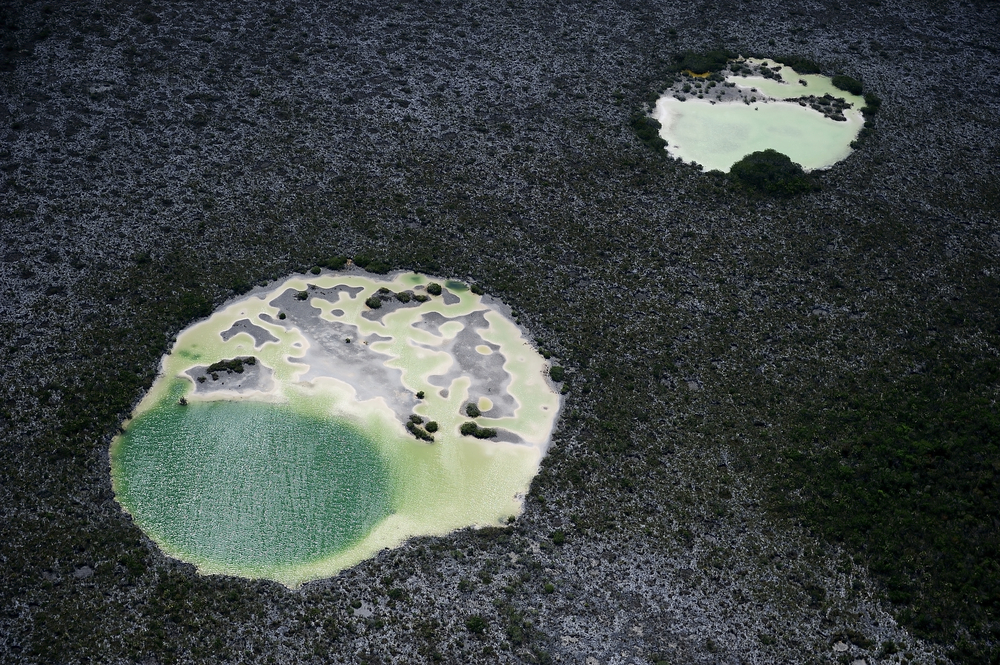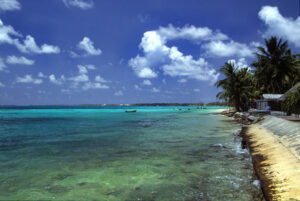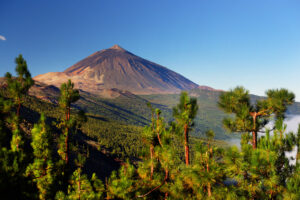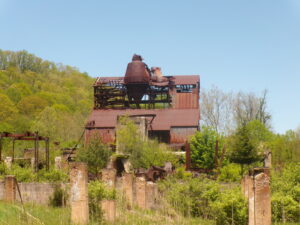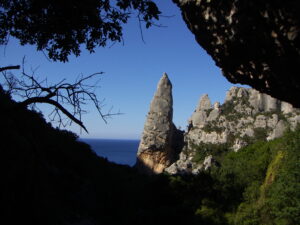Beyond the beaches and resorts of the Bahamas, Andros Island is the country’s best-kept secret. A hidden world of blue and black holes pockmarks the coastline and interior.
Andros has 200 blue holes, the highest concentration in the world. Blue holes typically occur around limestone. In the Caribbean, about 2.6 million to 11,700 years ago, sea levels were up to 120m lower than today. This exposed large areas of limestone bedrock to weathering and erosion. Slightly acidic rainwater seeped into the ground and slowly ate away the limestone, forming underground cave systems.
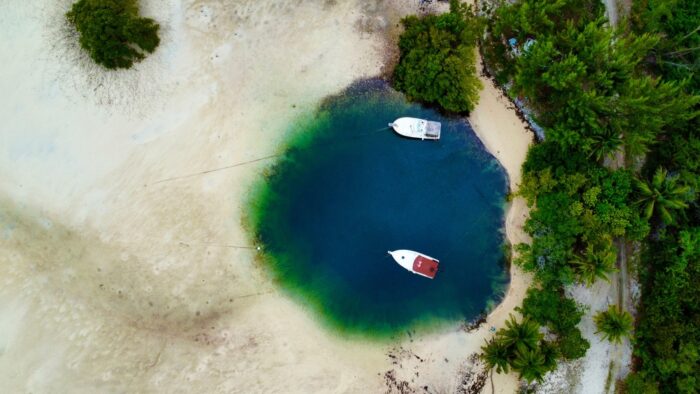
Blue hole on South Andros Island. Photo: Shutterstock
Some of these caves collapsed and formed vertical sinkholes. When the last ice age ended and glaciers melted, sea levels rose and flooded the sinkholes, creating deep, water-filled vertical shafts with a distinctive dark blue color. Some holes are even black; the color varies with the type of bacteria in the water, the amount of oxygen, levels of light absorption, and other factors.
Weathering and erosion created complex limestone formations and carved out underground tunnels that stretch for many kilometers. Divers flock to Andros to explore these labyrinths, with their stalactites and stalagmites, and dark, vertical shafts penetrating hundreds of meters.
Though it’s the largest island in the Bahamas, Andros is the least developed. Sometimes, the holes hide in plain sight, off dirt roads and among mangroves. Access is not heavily regulated and is managed by the Bahamas National Trust. No fees or bookings needed. All you need is bravery and scuba equipment.
Some of the more famous blue holes include: Cousteau’s Blue Hole (named after Jacques Cousteau), Stargate Hole, Captain Bill’s Blue Hole, Uncle Charlie’s Blue Hole, Benjamin’s Blue Hole, and Rat Cay Blue Hole. They vary in depth but range from 30m to 60m.
Cultural connections
Historically, Andros was home to the Lucayan Indians, who lived there for centuries before Christopher Columbus arrived in the Bahamas in 1492. The Lucayans left traces of their civilization, including ceremonial sites and artifacts. These ancient remnants are part of the island’s spiritual connection with the earth and sea.
In the 1970s and ’80s, legendary British diver Rob Palmer and his wife Stephanie conducted scientific dives in Andros’s blue holes, stumbling upon Lucayan remains and a Lucayan canoe at the bottom of Stargate Blue Hole. Sadly, the canoe later disappeared from the site.

An almost perfectly round blue hole. Photo: Shutterstock
Centuries after Columbus, the transatlantic slave trade brought Africans to the Caribbean. They developed new legends about the blue holes, combining them with traditional African beliefs.
Writer Noelle Nicolls with Caribbean Beat explains that according to Yoruba elders, blue holes represent an ancient African water spirit known as Oshun Ololodi. While locals mostly associate Oshun with rivers and freshwater ponds, she is also the spirit of dams and reservoirs — and thus indirectly, the blue holes in the Bahamas.
What’s at the bottom of a blue hole?
Some locals believe that the Lusca, the Caribbean’s answer to the kraken, lies in wait for unassuming divers. The Lusca is a half-shark, half-octopus creature, though some accounts depict it as a giant cuttlefish, octopus, or squid. This cryptid is supposedly 20 meters long and can drag humans and even ships into the depths.
The first sighting of the Andros Island blue hole’s monster was in 1836. An American captain told journalist Benedict-Henry Revoil that a kraken violently dragged two of his sailors into the ocean. One of the men chopped off an arm of the creature, which they presented to Barnum’s American Museum. Curators doubted its authenticity.
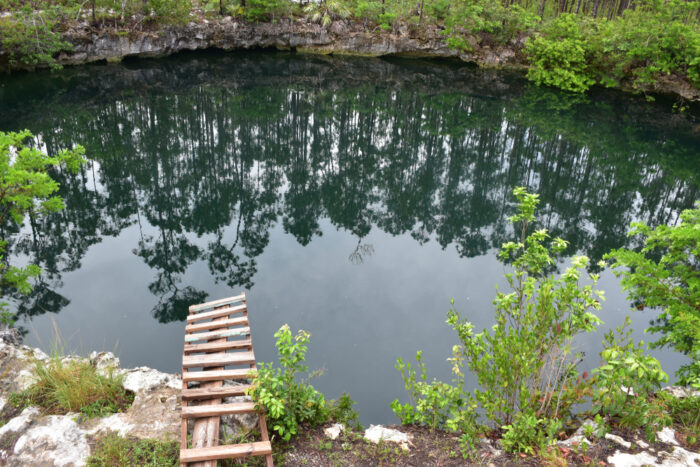
Uncle Charlie’s Blue Hole. Photo: Shutterstock
In 2011, a body with tentacles and a portion of a head reportedly washed ashore on Grand Bahama Island. However, this might have been just a rumor or tale; there was no evidence of this occurrence.
Explorer Josh Gates interviewed a local fisherman who saw the Lusca.
“We were fishing for dorado, and we happened to come across this strange animal,” the fisherman told him. “I thought it was a whale shark, but getting within fifty feet of it, I found out it was a strange animal with tentacles and the head of a shark. The head was kind of similar to a mako shark, with a pointed nose. The tentacles were the last thing we saw.”
It seems likely this folktale developed from sailors trying to explain deaths around the blue holes. The Lusca remains a popular tale in Caribbean culture and even inspired the cheesy sci-fi film Sharktopus.
